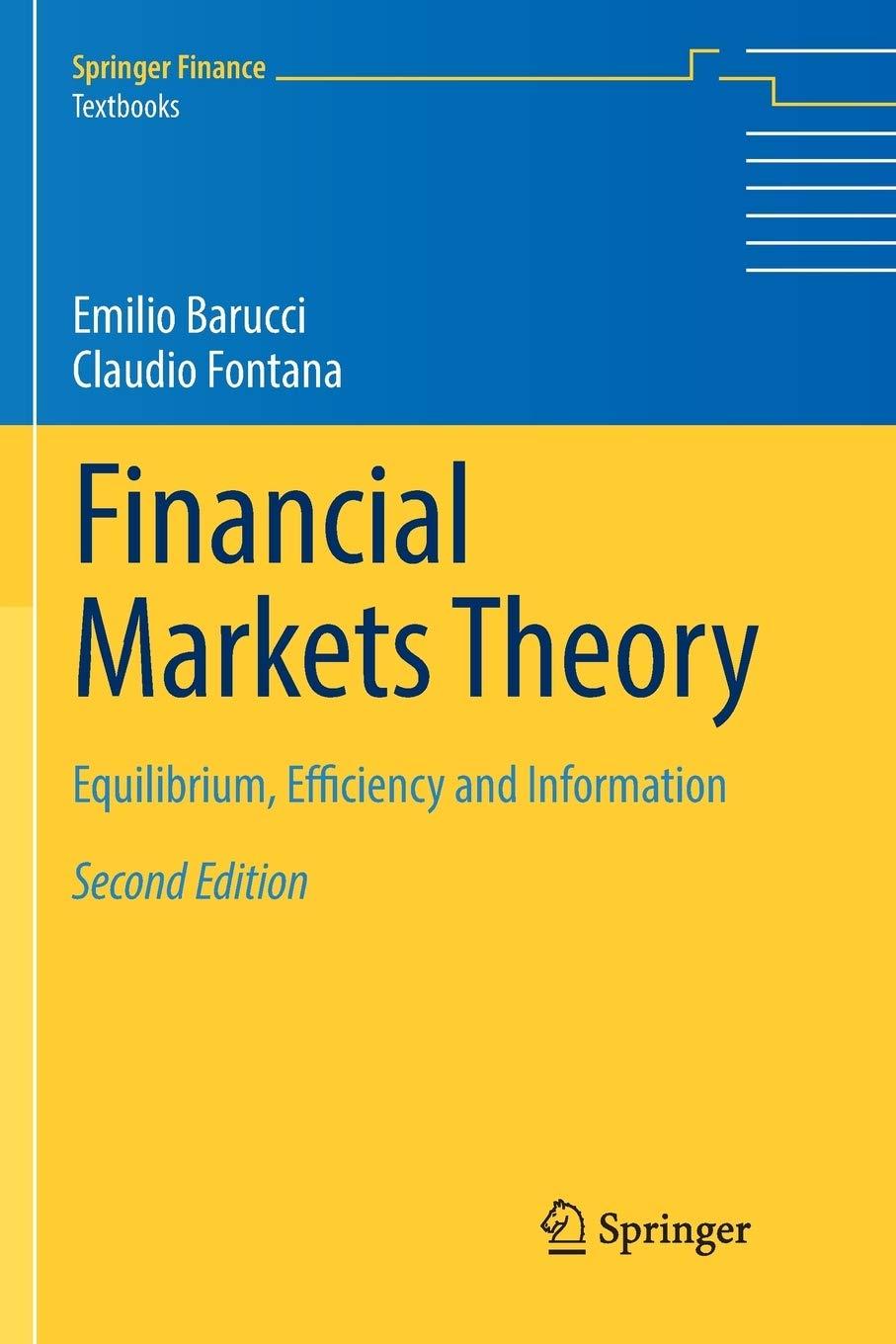(i) Consider an economy with two possible states of the world and two securities (i.e., (S=N=2) ),...
Question:
(i) Consider an economy with two possible states of the world and two securities (i.e., \(S=N=2\) ), with
\[D=\left[\begin{array}{cc}3 & 2 \\-3 & -2\end{array}\right] \quad \text { and } \quad p=\left(\begin{array}{l}1 \\1\end{array}\right)\]
Show that there exists an arbitrage opportunity of the second kind but there are no arbitrage opportunities of the first kind.
(ii) Consider an economy with two possible states of the world and two securities (i.e., \(S=N=2\) ), with
\[D=\left[\begin{array}{ll}3 & 2 \\3 & 3\end{array}\right] \quad \text { and } \quad p=\left(\begin{array}{l}1 \\1\end{array}\right)\]
Show that there exists an arbitrage opportunity of the first kind but there are no arbitrage opportunities of the second kind.
(iii) Show that, if there exists a portfolio \(\bar{z}\) such that \(D \bar{z}>0\) with \(p^{\top} \bar{z}>0\), then the existence of an arbitrage opportunity of the second kind implies the existence of an arbitrage opportunity of the first kind.
Step by Step Answer:

Financial Markets Theory Equilibrium Efficiency And Information
ISBN: 9781447174042
2nd Edition
Authors: Emilio Barucci, Claudio Fontana





